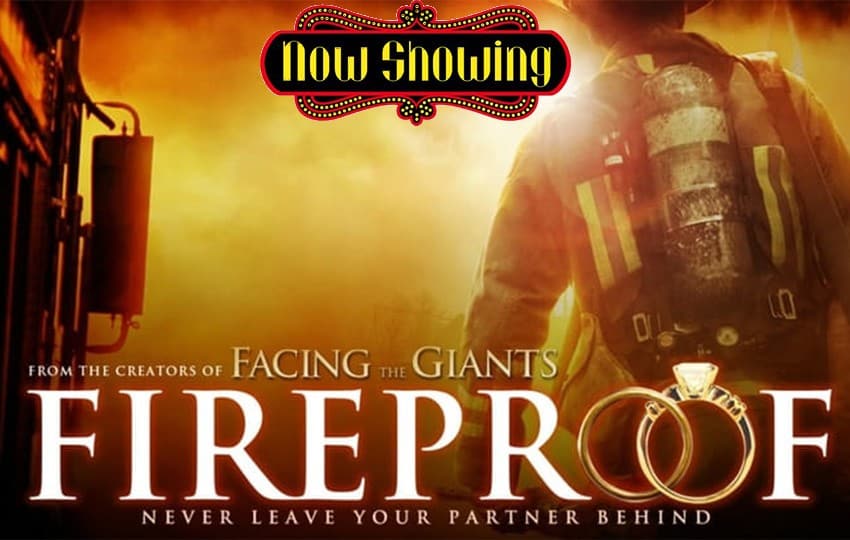
Ten years later, it was re-opened as the Town Theatre, designed in the Art Moderne style by architect John Zink, the designer of 17 theatres in the Maryland, D.C., Virginia area, including the still existing Senator in Baltimore. After this 2,200-seat theatre shut down, it was gutted and converted to a garage.
Where is the park from fireproof the movie movie#
It had a long and varied history, starting life as a burlesque (advertised as “Better Burlesque”) and vaudeville, then transitioning to an unsuccessful movie house, before reverting back to burlesque and finally closing in 1937. The Palace was built in 1911 in the Beaux-Arts style, and was initially called the Empire Theatre. Built in 1911 at 315 West Fayette Street, the Palace Theatre was located just around the corner from the Hippodrome, one of the few venues remaining today. One of the lost-and-now found theatres was actually named the Palace. Many of the prominent theatres in Baltimore, mostly downtown, gave the impression of entering a palace, with elaborate gilded plaster ceilings, marble or gold encrusted pillars on each side of the stage and fancy velvet curtains covering the screen. The Palace Theatre (311-317 West Fayette Street), ca. Only then did the the main attraction start, which might be The Thin Man, featuring William Powell as Nick Charles, a well-to-do detective along with his lovely wife Nora played by Myrna Loy, usually dressed in formal wear going to or coming from some fancy event. That was the movie business at that time. The screen lit up and Movietone News appeared with the news of the day after which a sonorous voice announced a short subject film, “The March of Time.” Songs over, Harvey and his Wurlitzer slowly descended and disappeared. Simultaneously, the lyrics for the song he was playing appeared on the movie screen behind him, with a bouncing ball skipping from word to word keeping time with the music. Once seated at the Century, the house lights dimmed, a spot light shown down in front of the stage and smiling Harvey Hammond rose from below on a pedestal, playing the organ.

Five years later the ballroom was converted to another theatre, the Valencia. The Century was built in May 1921, with a rooftop ballroom that opened that October. If they got there before Huyler’s Candy and Restaurant next door closed, the kids might be treated to a bag of non-pareils.

Dad wore a suit, mom put on a nice dress, the kids put on their school clothes, an early dinner at home was enjoyed and the family headed to movie palaces like the Loew’s Century Theatre on Lexington Street for a show. When the economy improved in the 1940s, families sought out the movies as a Saturday night treat. Harvey Hammond, organist at the Century Theatre from the 1930s to the 1950s. Compared to 27.3 million (9.7 percent) in the year 2000 this sharp decline in theatre attendance speaks for itself.(2) This was the Golden Age of Motion Pictures.

All of this for a ticket price between 20 and 25 cents.ĭuring the 1930s, weekly movie attendance was about 80 million or 65 percent of the country’s population. You could go to the movies, relax for a few hours and watch smartly dressed movie stars relaxing with a cigarette and a cocktail in a lavishly appointed apartments high above Park Avenue a life style most viewers would probably never achieve. The utilitarian nature of today’s movie theatre, and the rise of the multiplex, is in sharp contrast to the grandeur of yesterday’s cinema “palace.” Many of today’s movies contain extreme violence, possibly reflecting the turmoil of the world we live in, unlike those romantic affairs of the period between two debilitating world wars.īetween 19, while the country suffered through a devastating depression, motion pictures presented an inexpensive way to forget one’s troubles. The task of accounting for the loss of all of the motion picture theatres in Baltimore is a daunting one since records of openings and closings are scant, but the extent and flavor of a handful of the more prominent winners and losers – and the first hand knowledge of this writer who lived through the Golden Age of the movies in Baltimore – can hopefully shed some light on this history. Urban renewal not only took some of the land on which many movie theatres were located, but changed entire neighborhoods along with their demographics.(1) The technological advances that created this once popular form of entertainment also contributed to its demise, as television and later the internet allowed viewers to stay at home to watch a wide variety of program choices. What happened to the movie business in Baltimore? Between 19 about 235 movie theatres in Baltimore opened and closed. Eutaw Street, 1918, detail of PP8-387, MdHS (reference photo). The Hippodrome Theatre, one of Baltimore’s lost now revitalized theatres in 1918.


 0 kommentar(er)
0 kommentar(er)
